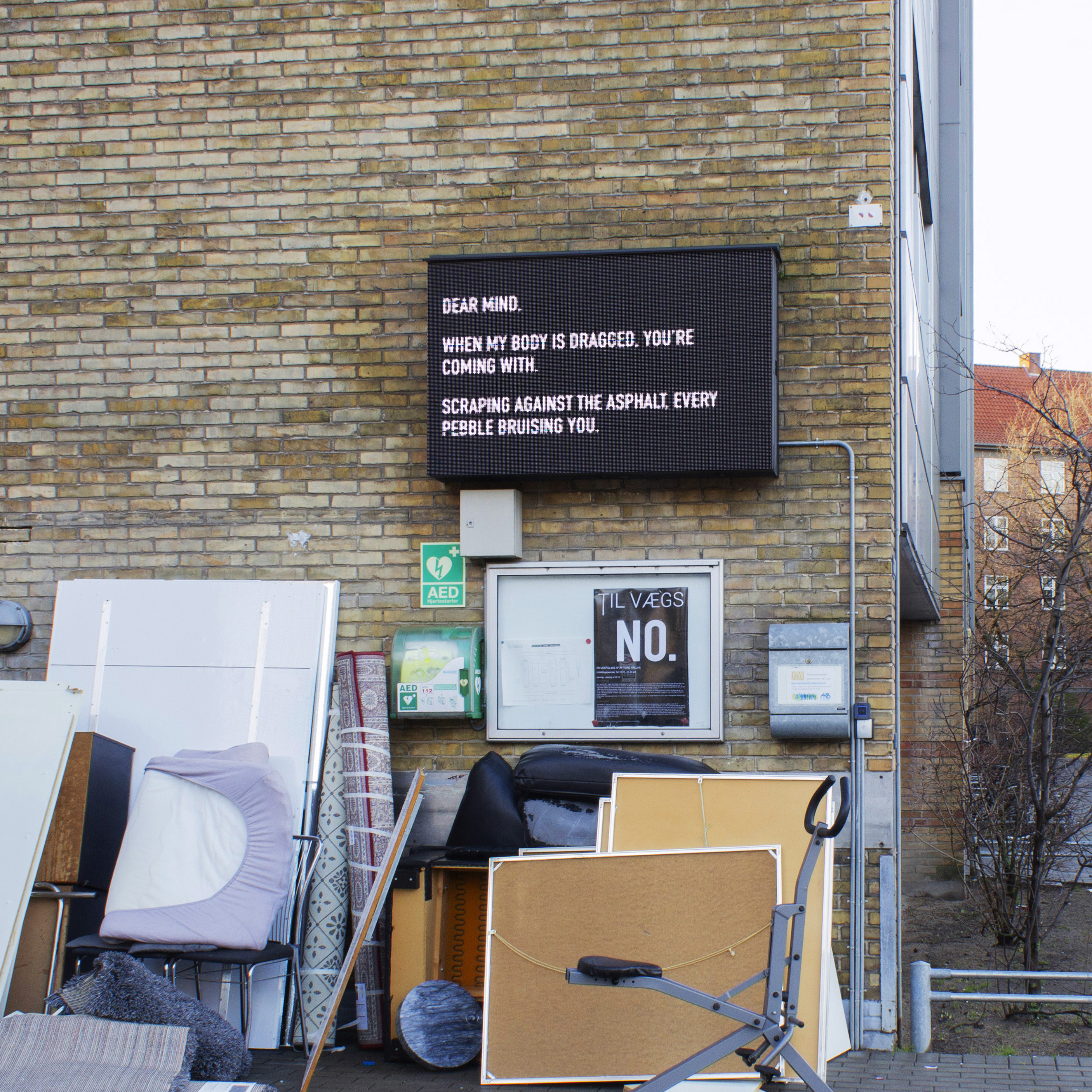SELECTED WORKS

‘You Are Closer To God When You Do Not Indulge’
Video, 22 min
2024
Screened at
CPH:DOX, DK,
and exhibited at
Post Territory Ujeongguk, KR,
Oksasenkatu 11, , FI and
KINDL, DE
‘...Closer to God...’ is both an explicit and intimate visual study of the discourses that determine which bodies are deemed desirable and worthy of admiration in a sexualised economy. In a stylised tablaeu, lit like renaissance paintings, the camera examines bodies frozen in embrace and desire.
Poetically disseminating knowledge about the discrimination of fat people as it relates to career and financial opportunities The interweaving of explicit intimate imagery and scientific research reveals discourses judging which bodies are deemed worthy of sexualization and the financial consequences that follows.



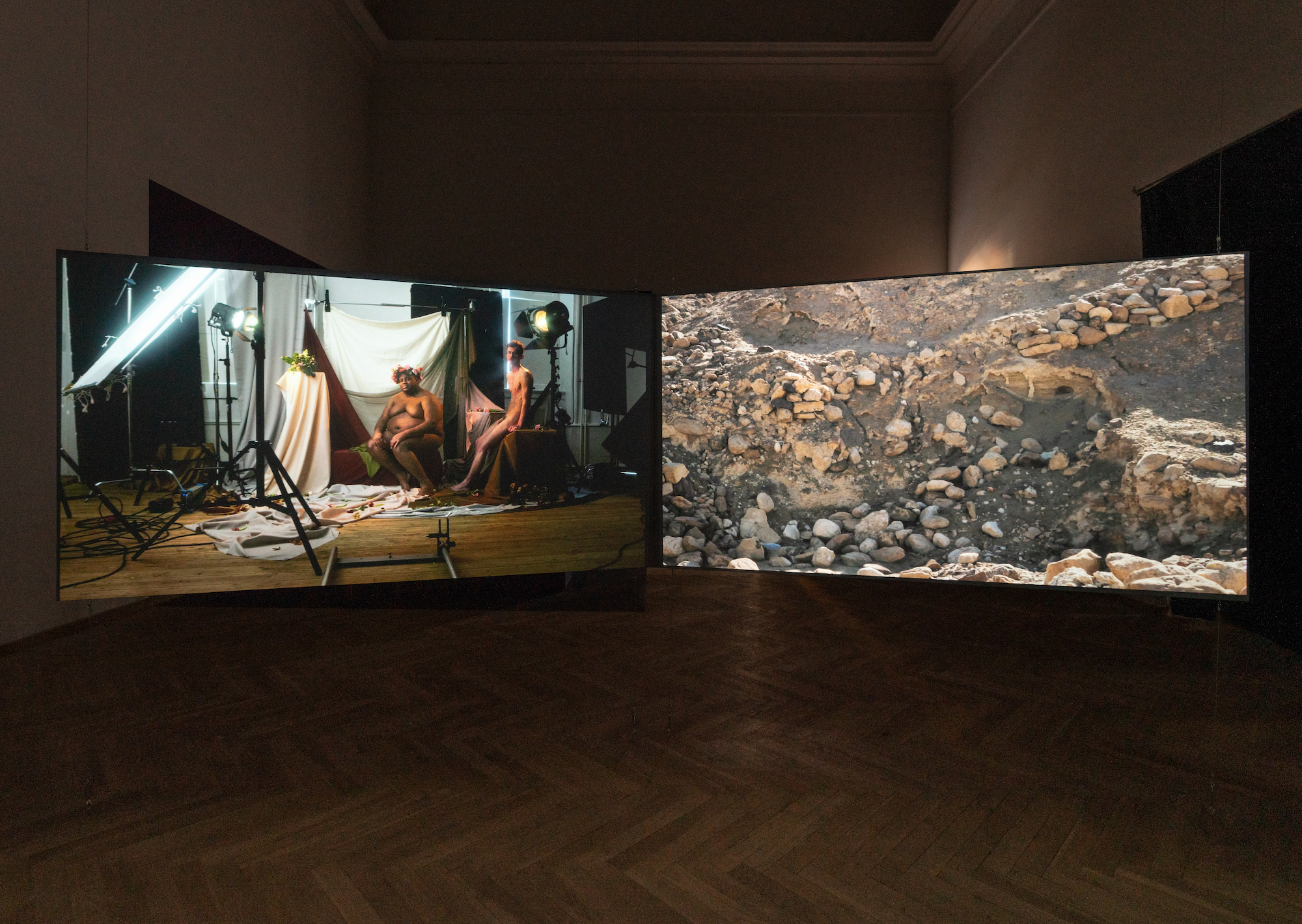 “‘And going after strange flesh’ is a fragment from a passage in the Bible that describes the cities of Sodom and Gomorrah surrendering to fornication and, according to some accounts, possibly homosexual relations. Tore Hallas takes this reading of the passage as the premise for his two-screen film piece that explores questions of shame in relation to male homosexuality and fatness. Working with simplified imagery in the style of contemporary portraiture and the travelogue, Hallas scrutinises the intersection of male howmosexuality, race and fatness.
“‘And going after strange flesh’ is a fragment from a passage in the Bible that describes the cities of Sodom and Gomorrah surrendering to fornication and, according to some accounts, possibly homosexual relations. Tore Hallas takes this reading of the passage as the premise for his two-screen film piece that explores questions of shame in relation to male homosexuality and fatness. Working with simplified imagery in the style of contemporary portraiture and the travelogue, Hallas scrutinises the intersection of male howmosexuality, race and fatness. In a heteronormative culture, both homosexuality and fatness are stigmatised, and the latter is equally stigmatised in mainstream gay culture. Hallas sets out on his search for an understanding of this particular shaming in the context of the religiously loaded location of the ancient city of Sodom.
The footage on one screen presents what resembles a study of the sexualised representations of fat gay men and the men who desire them, while on the other we see a road movie-like search for what is said to be the ruins of Sodom. Images and soundtrack fetishize and deconstruct both the body and the landscape, as well as their readings and markings through feelings of shame.
The title refers to homosexual sexual desire or desire for otherness, which, in the context of the scripture, can be seen as a desire for the divine and has also been interpreted as lust for angelic figures. Hallas approaches these myths, claims and uncertainties about religious meaning and historical events as storytelling tools, detourning them towards the personal and sexualised struggles of the ideological everyday.“
- Curators Katarina Stenbeck (The Royal Danish Academy of Fine Arts) & María Berríos (Berlin Biannale, MACBA)
‘And Going After Strange Flesh
(their god is their belly, and they glory in their shame, with minds set on earthly things)’
Video 13 min
Video 11:30 min
Audio 6 min
Two channel video, one channel audio, out of sync, looping.
2019

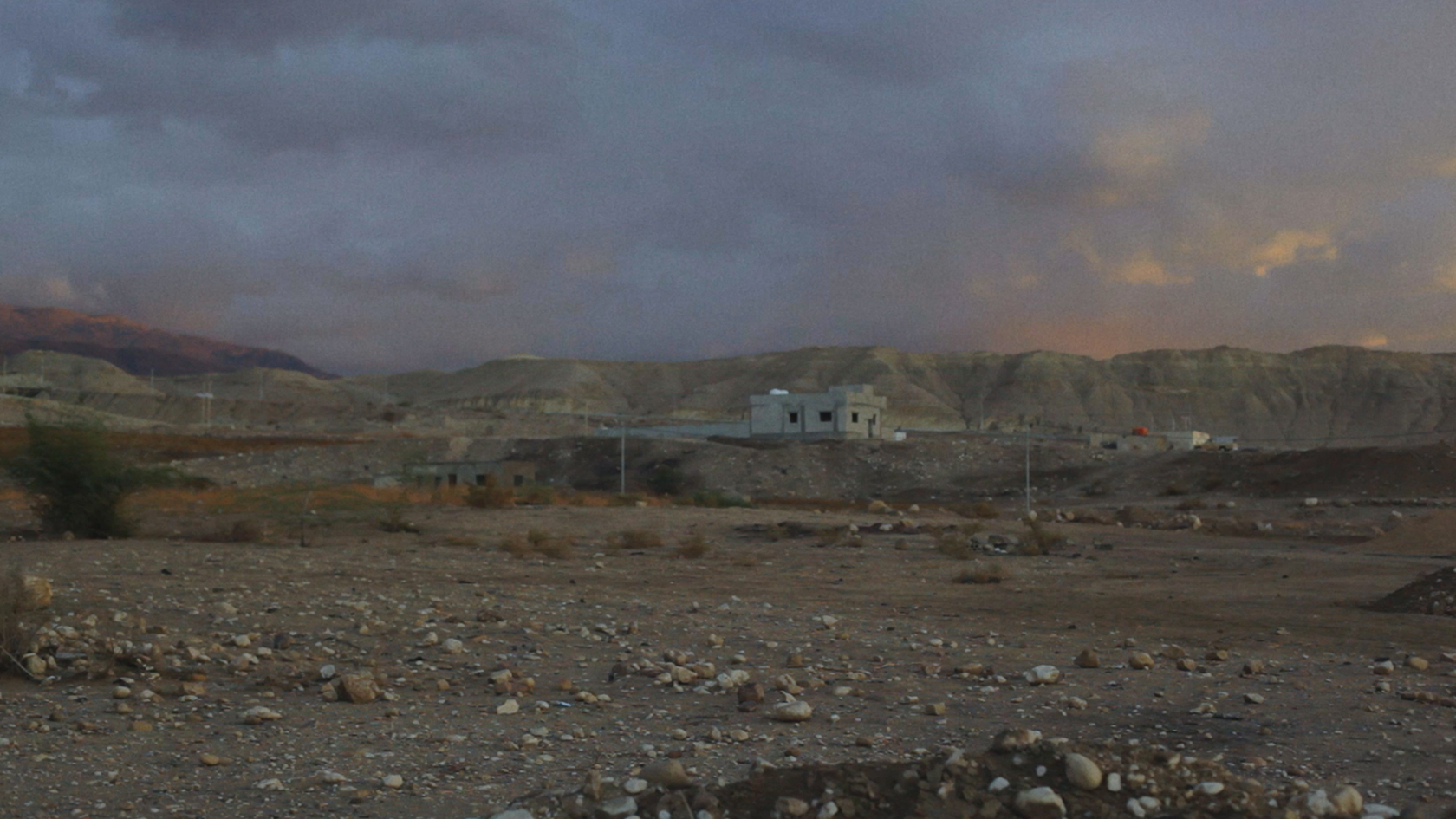
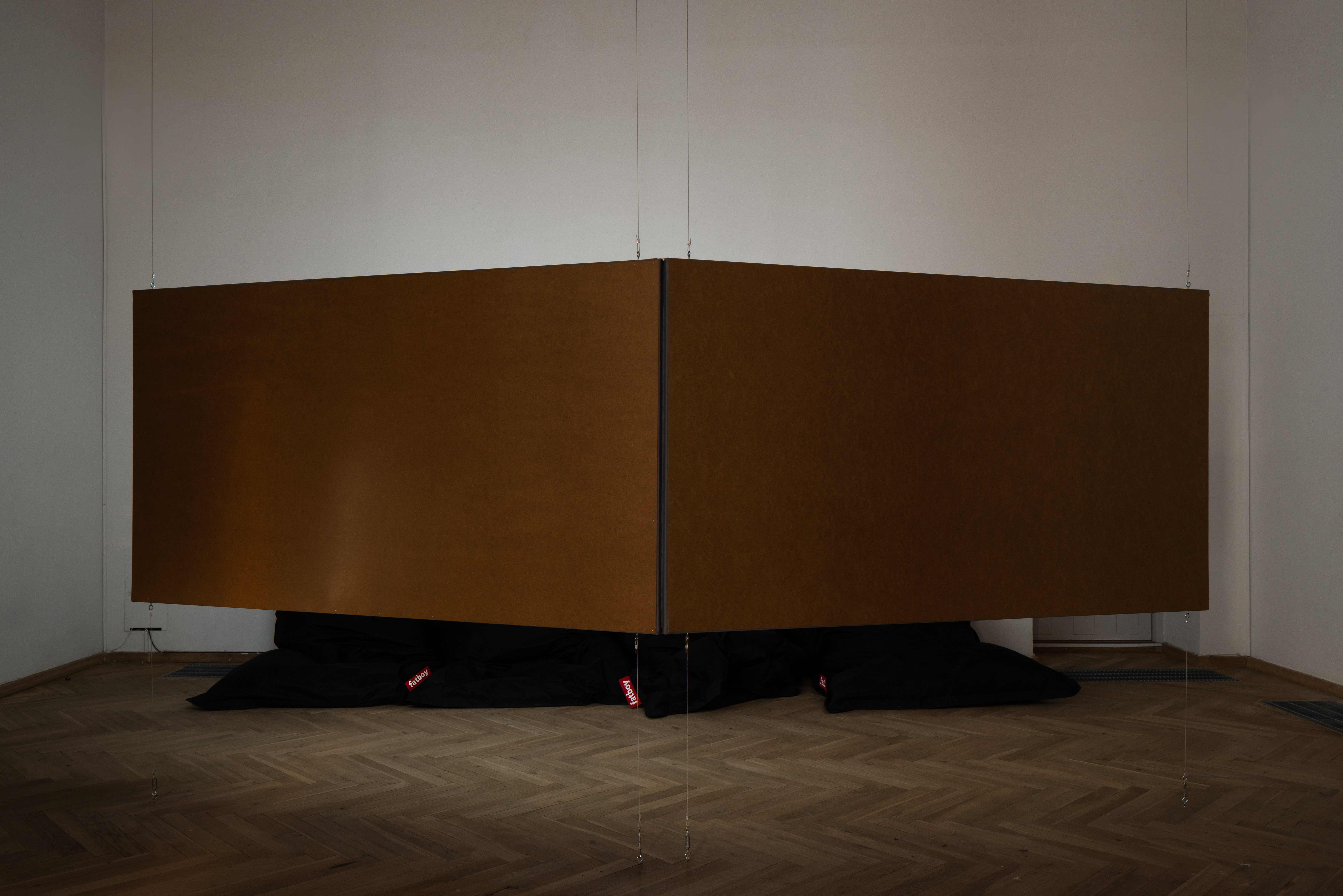 This work is part of the collections of
This work is part of the collections of Vejle Museum of Art and
Malmö Museum of Art
Has also been exhibited at
Charlottenborg Kunsthal, DK
621 Gallery, USA
and screened at
Lys.Mur, DK
Lemvig Church, DK
among others
Documentation by David Stjernholm
(Yet untitled series)
Lenticular prints
2023
Shown at Sorø Museum of Art

Documentation by Jenny Sundby



‘Something inherent’
Video, 9:30 minutes, no audio
2015
Has been exhibited at
Enter Art Fair’s curated program, DK
Pass7, PT
and Kunstnernes Efterårsudstilling 2015, DK
Also published in photographic form and the basis of an essay in the anthology Kunstnernes Efterårsudstilling 120 år.
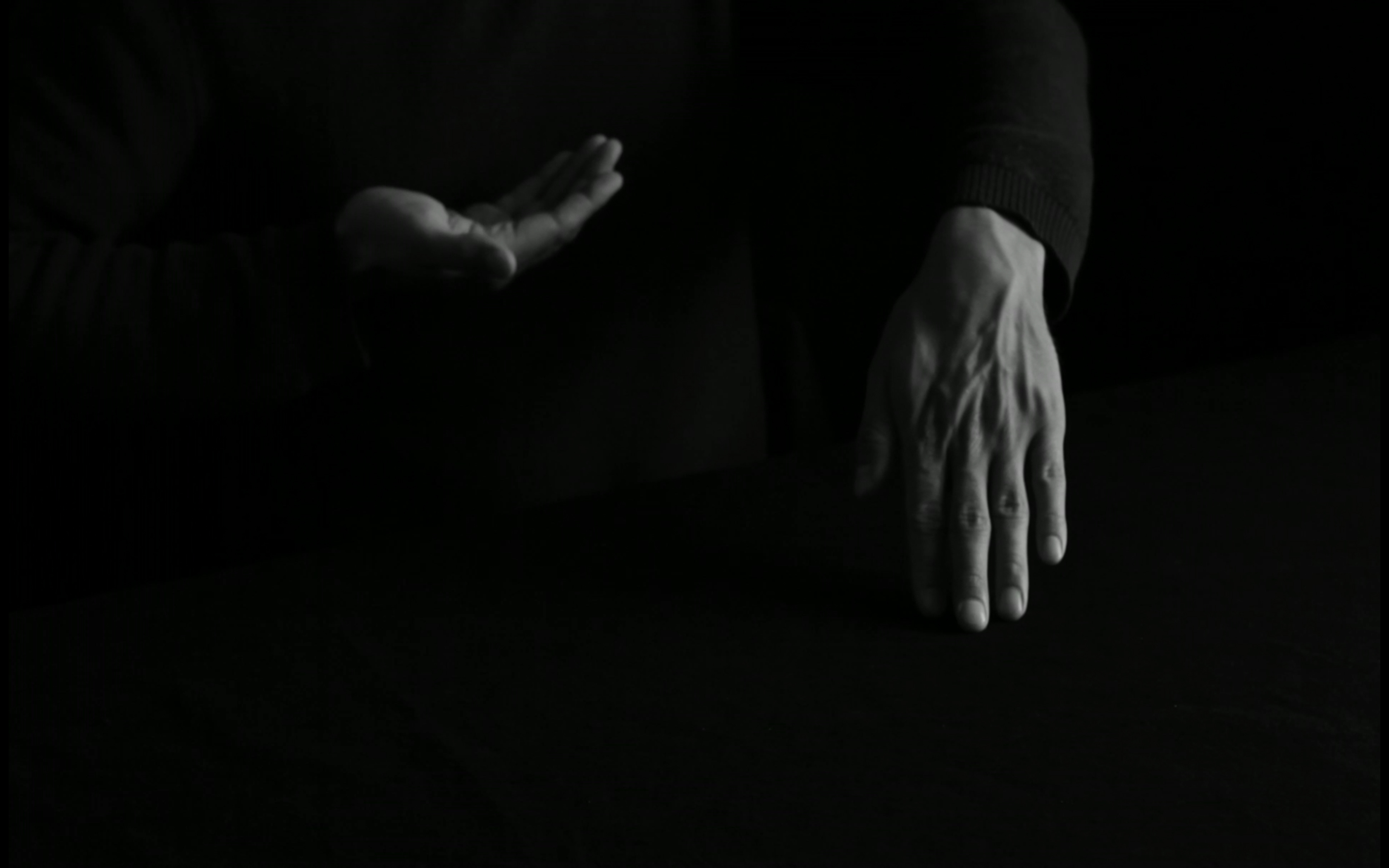
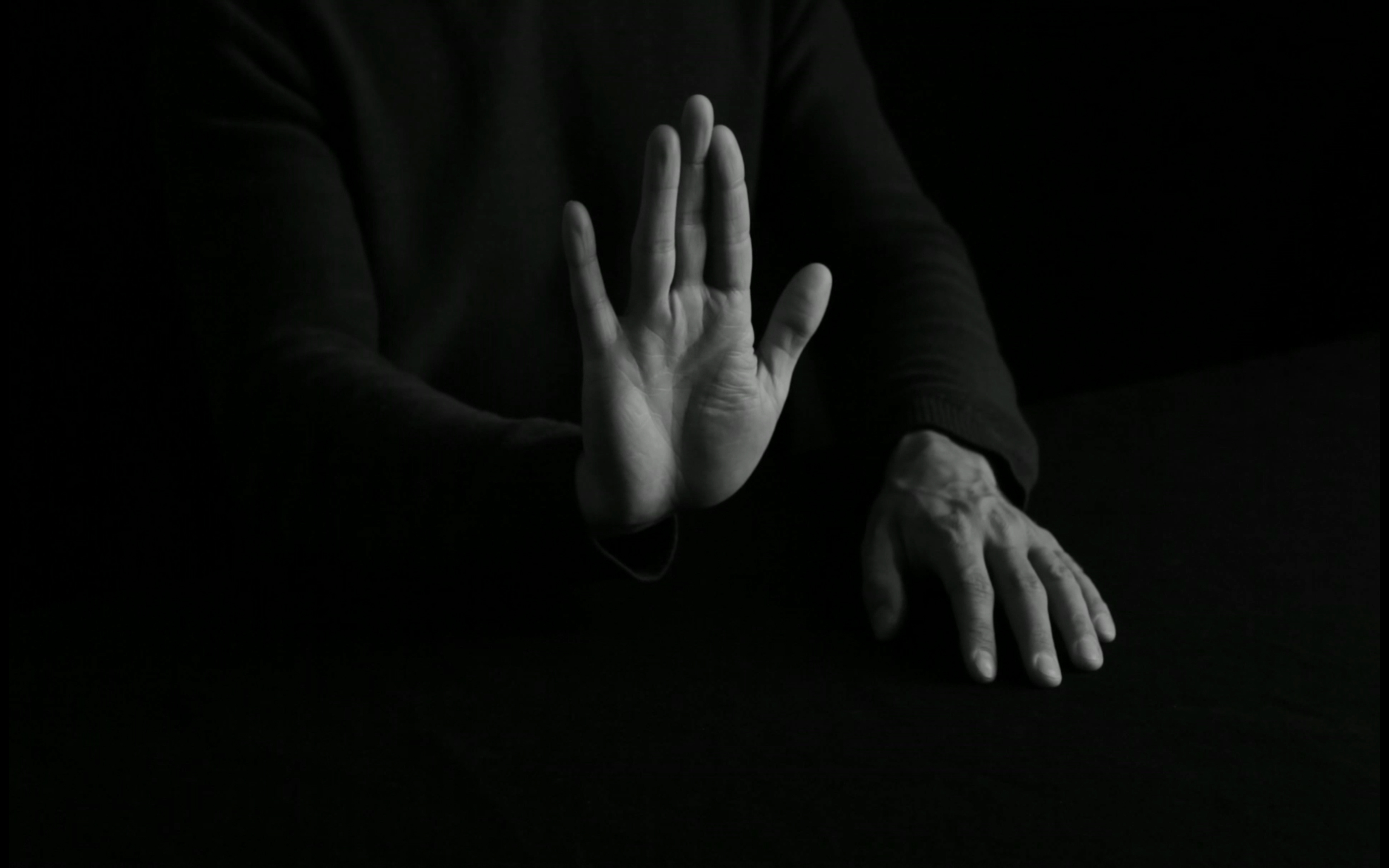

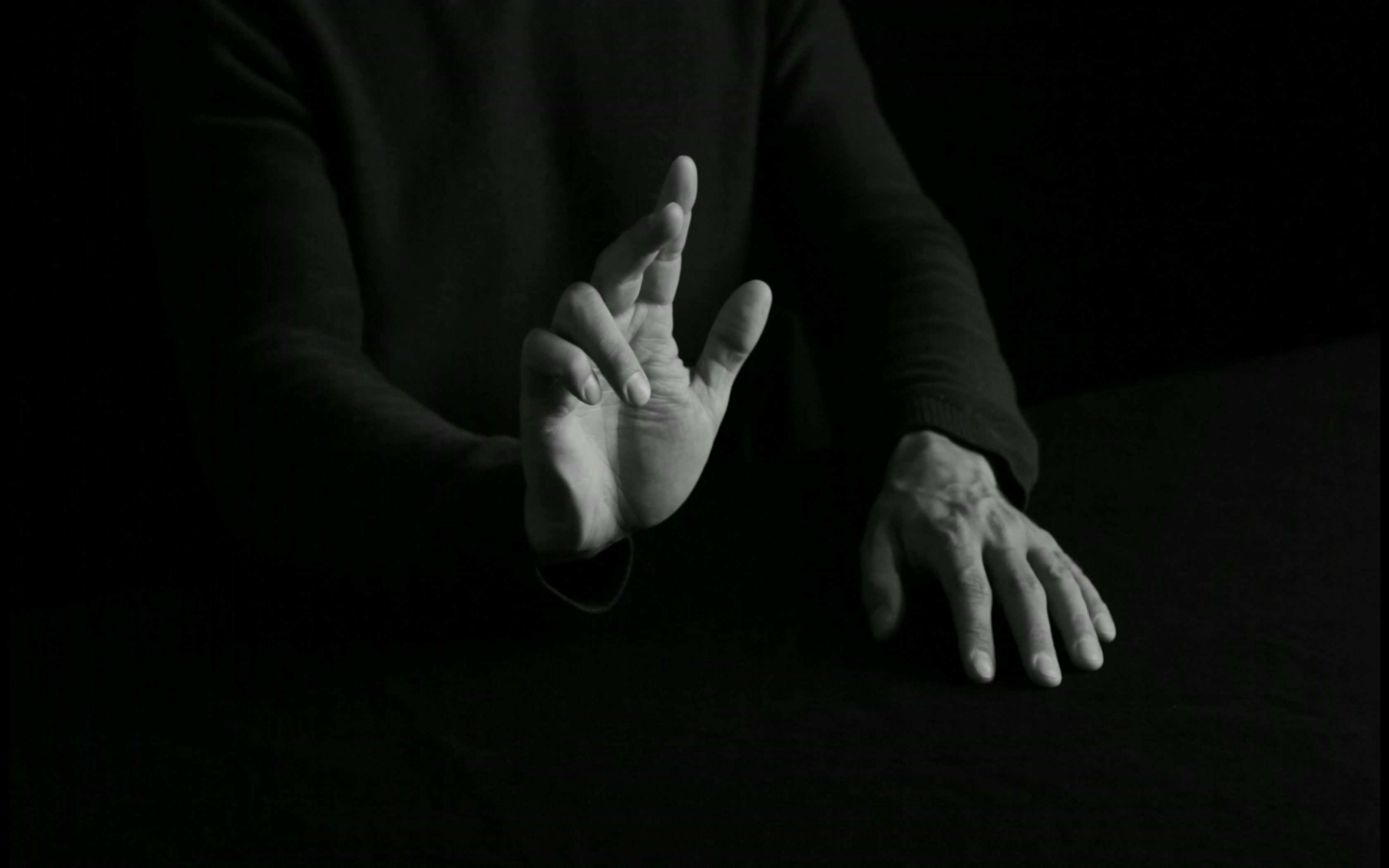

‘An Empty Container Of’
Inkjet prints, frames, podiums, fabric, c-stands, photographic flags, coin
2021
Installation based on photographic series ‘Thanatos’, and installations ‘Any Tree Of Any Life’ and ‘Any Coin For Any Ferryman’.
Has been exhibited at
OK Corral, DK
and Fotografisk Center, DK
“On a narrow pedestal in the middle of the room rests a dubious copy of a silver coin. The coin is bought online and is a souvenir of the kind that tourists drag home from Athens. In Greek mythology, the deceased pay a ferryman to ferry them across the river to the realm of the dead, and the coin thus represents the successful transition between life and death. A memento mori, that is, or a way to wish the dying a good journey, but an inadequate, sarcastic one, mass-produced in nickel and sold on one of the internet's more dubious webshops.
'An Empty Container Of' is based on a personal grieving process, but unfolds it into a universal study of the relationship between photography and transience, fatness and pathologization. Throughout the past year's pandemic, existentialist questions of illness and death have become present for many of us. But for one who lives in a fat body, the pathologization is constant; the fat body is spoken of as a container for the life, it ends up suffocating.
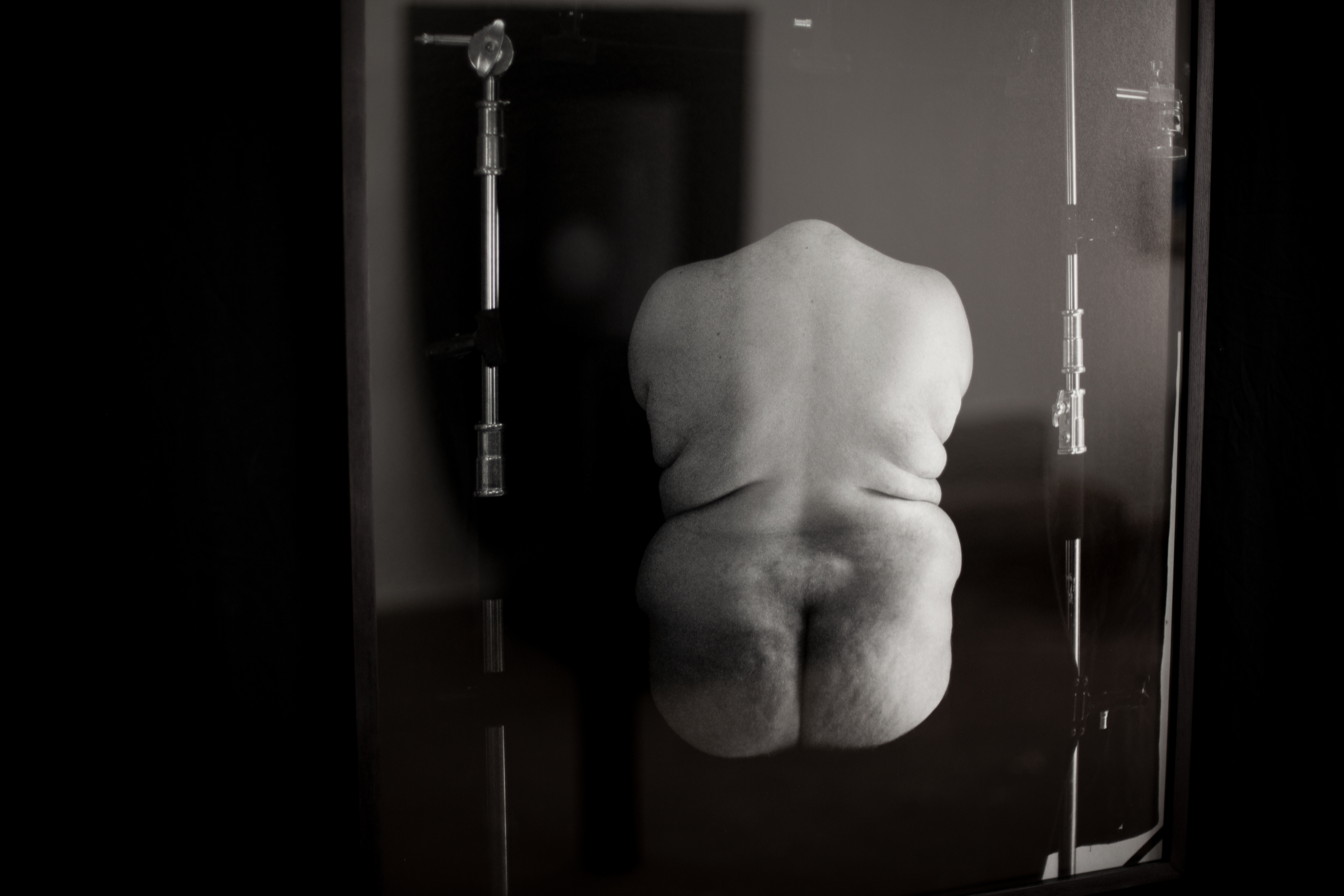
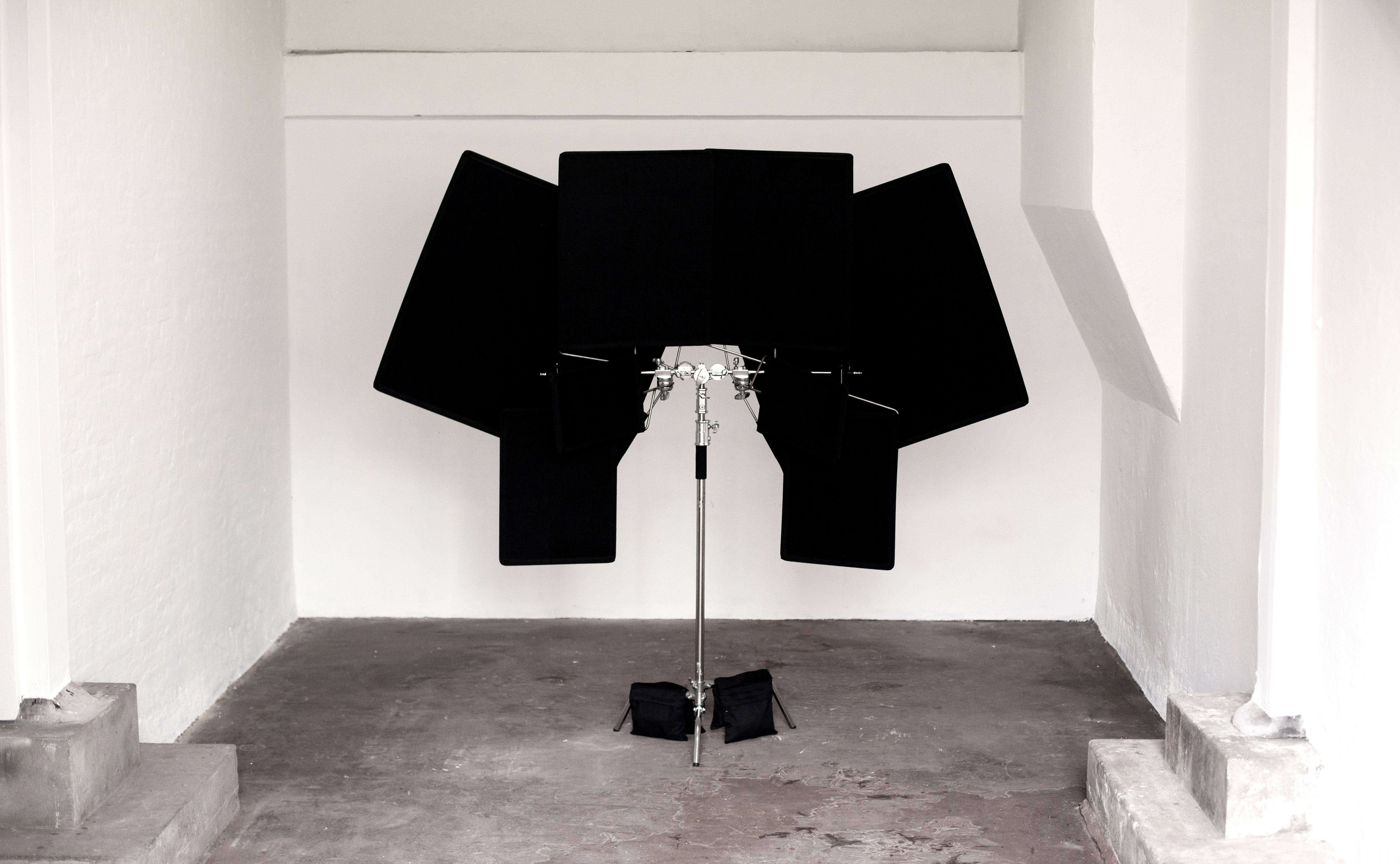
The exhibition centers around a series of photographs called Thanatos, who in Greek mythology is the personification of death, but is also a freudian term for a death drive, which compels humans to engage in self-destuctive acts. Being fat is often seen as such, as a walking time-bomb of self-inflicted death. Walking down the street, the fat person advertises death. This deems a fat persons death less tragic and more acceptable. But this is something projected on the fat body, rather than something inherent in it. The projection of a death drive.
Black-and-white photographs show fragmented body parts in distorted, awkward poses, as if they were the remaining remnants of a ruined marble sculpture. But unlike the classical sculpture, Hallas' bodies are far from the ideal; it is the fat body, the body with indistinct gender markers and in some cases the artists own body, which is produced in a semi-abstract, but in some places also self-revealing and -referential idiom.
The works showcase their own construction; a rod from a photostand breaks the illusion of the free-floating arm and a self-timer reveals how the image came to be. The same elements emerge from the photographs and into the space, where they take the form of a kind of gloomy, stiffened tree of life with metal branches without leaves and heavy, black molton that absorbs light and hinders photosynthesis. It is photography that shows what it does, thereby asking questions of what it represents: What do we contain when we photograph someone and what type of containers do we photograph?”
- Curator Louise Steiwer (Kunstkritikk, Ok Corral)
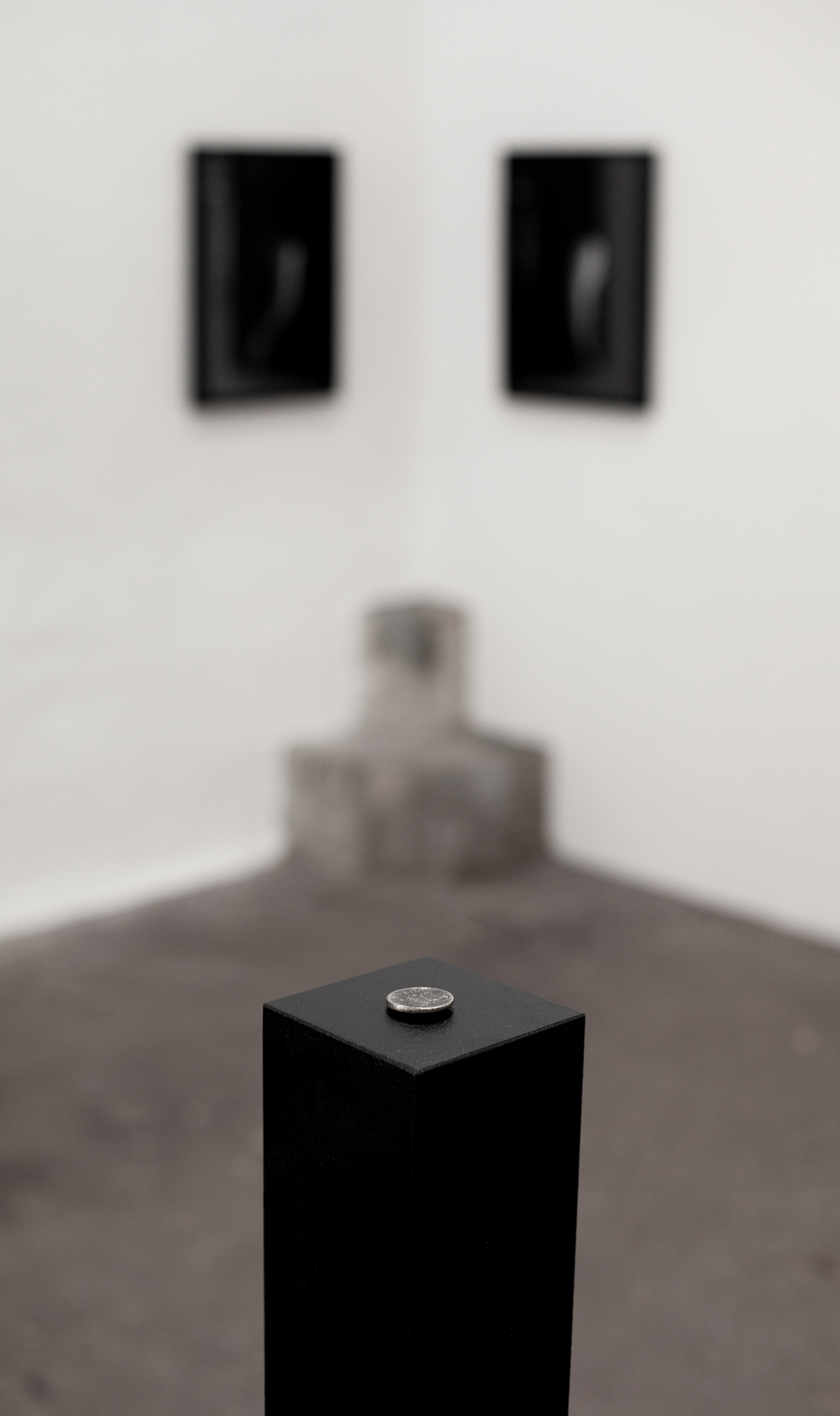

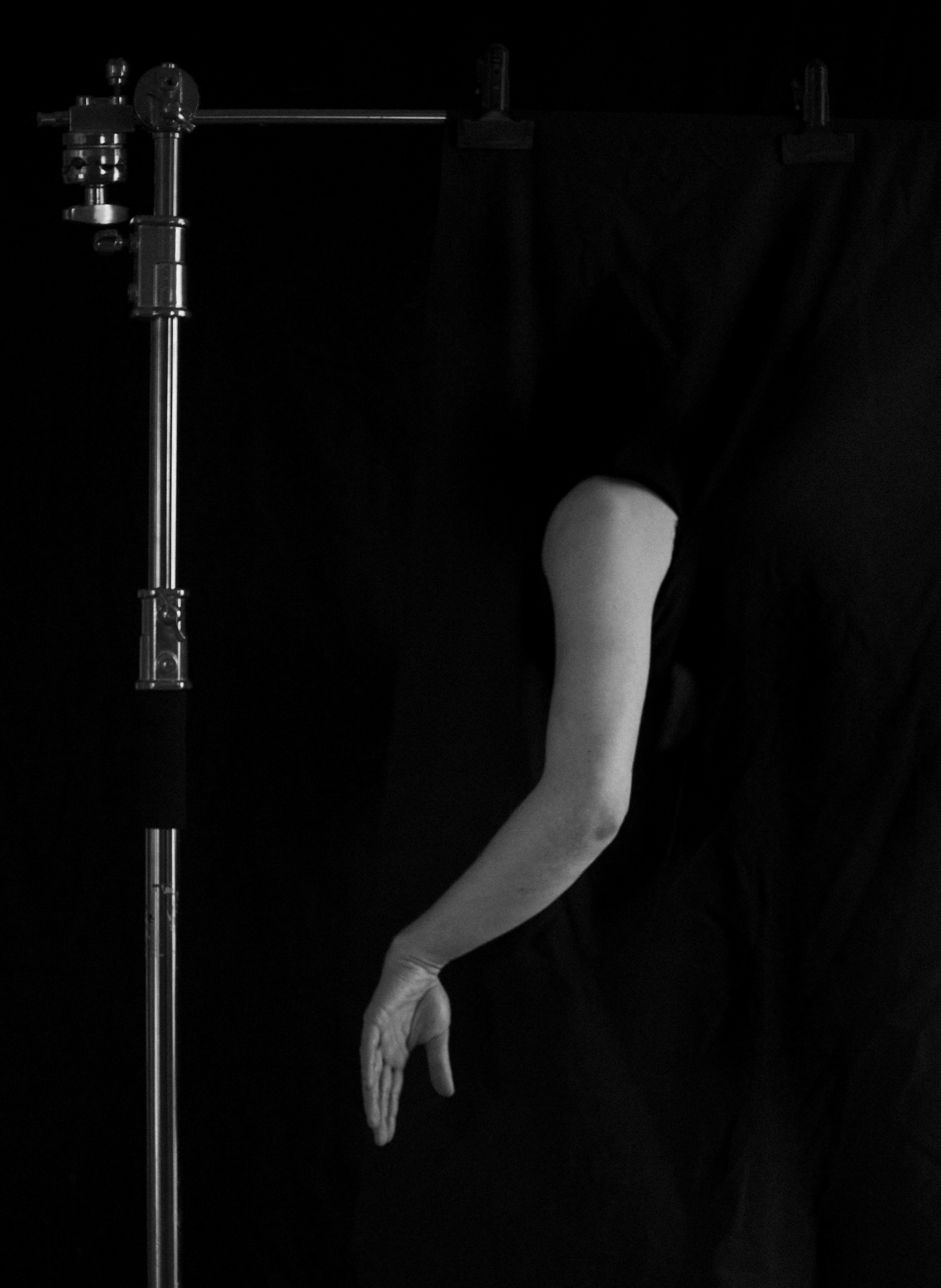

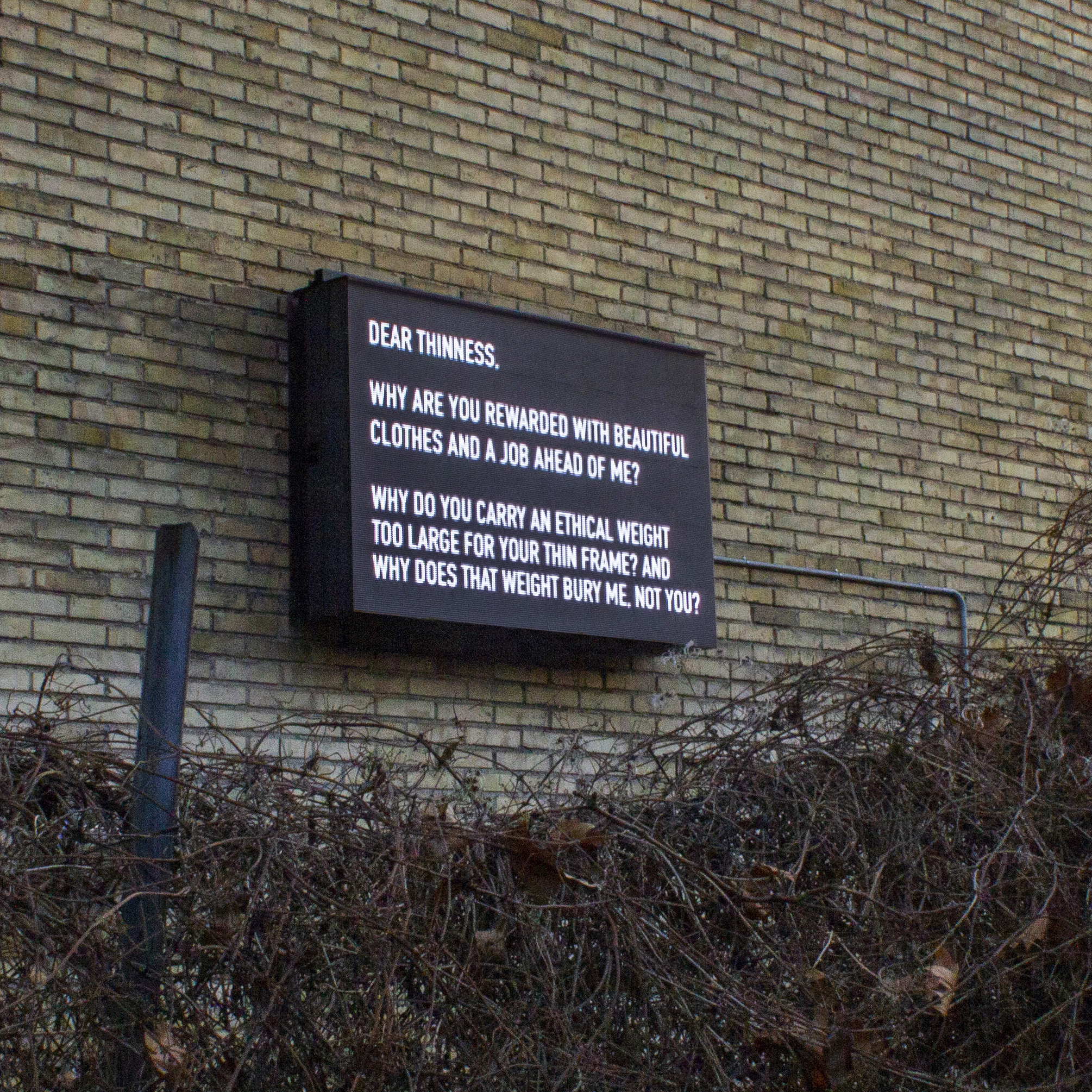

‘NO.’
Text on 7 LED screens, mounted on the walls of a social housing estate.
2021
Exhibited at Til Vægs, DK and
Galleri CC, SE
Documentation by Tore Hallas, Nils Elvebakk Skalegård
"The work "NO." takes it's beginnings in the body, as a mental and physiological archive. It is manifested in seven poems, or a poem in seven parts, where the body is on one hand the focal point, and on the other hand it extends beyond itself and into the social sphere towards or against the demands we are faced with in a competitive society. It is an "I" that writes messages to the pace of the world, to rest, career opportunities or the mind.
The poems are testimonies to a life lived in the present, a life that is incapable of succeeding in a performance culture, a life that refuses. The body is fat in a world that celebrates thinness, the mind is sick in a society (perhaps due to a society) that does not have the time and space for illness. In his involuntary unwillingness, the protest arises.
Hallas focuses on queerness in his artistic work - in this work queer as in stepping outside a norm; not being able or willing to live up to an ideal."
- Curator Louise Lassen Iversen (meter)
![]()
The poems are testimonies to a life lived in the present, a life that is incapable of succeeding in a performance culture, a life that refuses. The body is fat in a world that celebrates thinness, the mind is sick in a society (perhaps due to a society) that does not have the time and space for illness. In his involuntary unwillingness, the protest arises.
Hallas focuses on queerness in his artistic work - in this work queer as in stepping outside a norm; not being able or willing to live up to an ideal."
- Curator Louise Lassen Iversen (meter)
